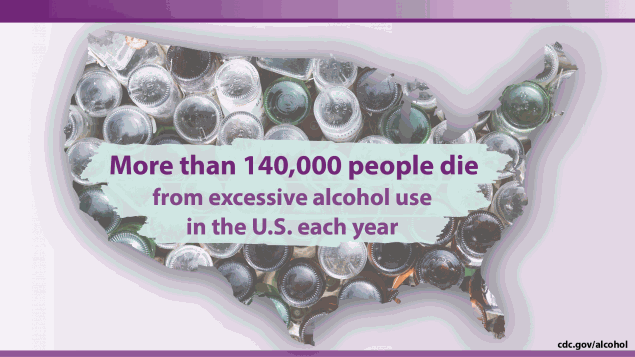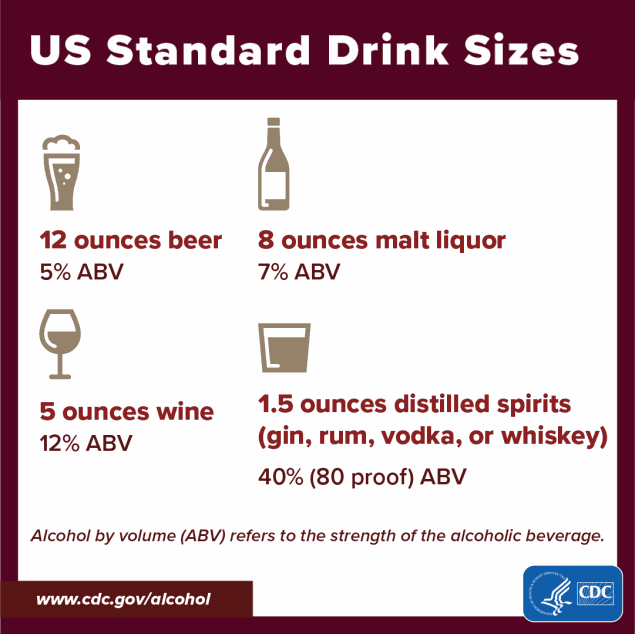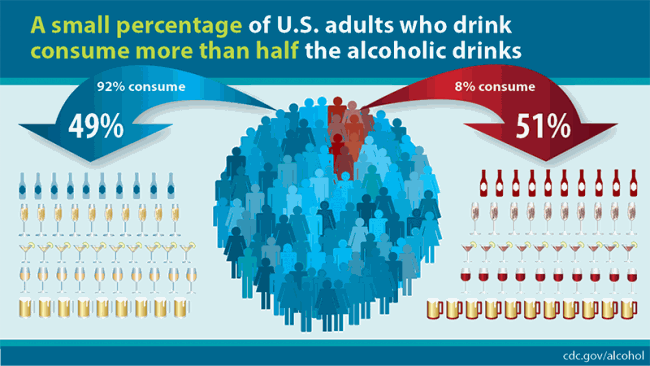
Americans like to drink. Americans drink approximately 2.3 gallons of alcoholic beverages per year. Nearly half the population over the age of 12, or 133 million, report the past month’s use of alcohol, with 45% of that group reporting binge drinking* according to the 2021 National Survey on Drug Use and Health (NSDUH). A 2017 Journal of the American Medical Association (JAMA) study reported that 12.7% or one in eight people meets the diagnostic criteria for an Alcohol Use Disorder (AUD). This number is higher than the estimate in the NSDUH. Individuals who meet the criteria for alcohol abuse or alcohol dependence are included in the population of people with an AUD.
According to the National Institutes of Health (NIH), to meet the criteria for alcohol abuse, a person engages in the following behavior during the past 12 months.
- Recurrent use of alcohol resulting in a failure to fulfill major role obligations at work, school, or home (e.g., repeated absences or poor work performance related to alcohol use; alcohol-related absences, suspensions, or expulsions from school; neglect of children or household).
- Recurrent alcohol use in situations in which it is physically hazardous (e.g., driving an automobile or operating a machine when impaired by alcohol use).
- Recurrent alcohol-related legal problems (e.g., arrests for alcohol-related disorderly conduct).
- Continued alcohol use despite having persistent or recurrent social or interpersonal problems caused or exacerbated by the effects of alcohol (e.g., arguments with spouse about consequences of intoxication).

Alcohol dependence, according to the NIH, requires that person experiences three of the seven symptoms listed below and take directly from the material provided by the NIH.
- Need for markedly increased amounts of alcohol to achieve intoxication or desired effect; or markedly diminished effect with continued use of the same amount of alcohol.
- The characteristic withdrawal syndrome for alcohol; or drinking (or using a closely related substance) to relieve or avoid withdrawal symptoms.
- Drinking in larger amounts or over a longer period than intended.
- Persistent desire or one or more unsuccessful efforts to cut down or control drinking.
- Important social, occupational, or recreational activities given up or reduced because of drinking.
- A great deal of time spent in activities necessary to obtain, to use, or to recover from the effects of drinking.
- Continued drinking despite knowledge of having a persistent or recurrent physical or psychological problem that is likely to be caused or exacerbated by drinking.

According to the National Institute on Alcohol Abuse and Alcoholism (NIAAA), nearly twenty percent of Emergency Department visits were related to alcohol use, with almost 100,000 people dying from alcohol-related causes annually. The most common chronic conditions leading to death attributable to alcohol include but are not limited to liver disease, cirrhosis of the liver, liver cancer, heart disease, hypertension, and stroke. Regrettably, fewer than 10% of those with an AUD will receive treatment of any kind. If you or a loved one meet the criteria for an alcohol use disorder, please consider contacting your employee or member assistance program (EAP/MAP) for guidance on the best and most appropriate resource for treatment covered by your health insurance. You may also text or call 988, the crisis lifeline, which provides confidential support and linkage to helping resources. The Substance Abuse and Mental Health Services Administration, or SAMSHA, offers a behavioral health treatment services locator on its website.
*The glossary for the 2021 National Survey on Drug Use and Health defines binge drinking of alcohol for females as drinking four or more drinks on the same occasion (i.e., at the same time or within a couple of hours of each other) and for males as drinking five or more drinks on the same occasion on at least 1 day in the past 30 days.
